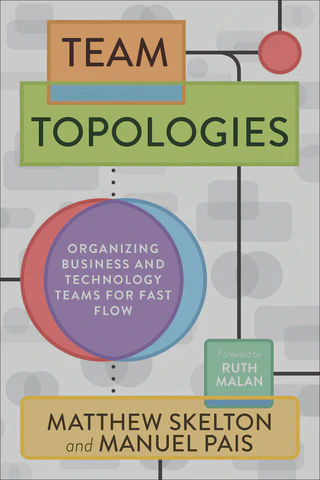Team Topologies: Organizing Business and Technology Teams for Fast Flow
Aug 20, 2025
·
1 min read

Skelton and Pais provide four fundamental team types and three interaction modes to align organizational structure with desired software architecture.
Matthew Skelton, Manuel Pais
IT Revolution, 2019
ISBN 9781942788812
Who This Is For:
Engineering leaders, CTOs, DevOps practitioners, enterprise architects, organizational designers working to improve delivery speed and team effectiveness.
Resources & Links
Skelton and Pais bridge technical architecture and human organization, offering patterns to reduce inter-team friction, accelerate platform adoption, and create sustainable delivery systems.
Who This Is For
Engineering leaders designing organizational structures. CTOs seeking frameworks for team evolution. DevOps practitioners implementing platform teams. Enterprise architects aligning technical and organizational design. Anyone frustrated by Conway’s Law working against their architecture goals.
Key Takeaways
- Four Fundamental Team Types: implement stream-aligned teams (delivering features), enabling teams (coaching), complicated-subsystem teams (specialists), and platform teams (internal services) to create clear organizational boundaries and accelerate value delivery through specialized team topologies.
- Cognitive Load Management: limit each team’s cognitive load to one major domain to prevent burnout, improve focus, and ensure teams can operate autonomously without constant context-switching between disparate systems.
- Team-First Architecture: design software architecture around team boundaries rather than forcing teams to adapt to architecture, ensuring systems remain within teams’ cognitive capacity and enabling faster autonomous delivery.
- Three Interaction Modes: use collaboration, X-as-a-Service, and facilitating modes to define how teams interact, reducing ambiguity and enabling appropriate coupling/decoupling based on organizational maturity and product lifecycle stage.
- Conway’s Law as Design Tool: deliberately design team structures to produce desired software architectures, recognizing that organizational communication patterns will inevitably mirror system design regardless of intentions.